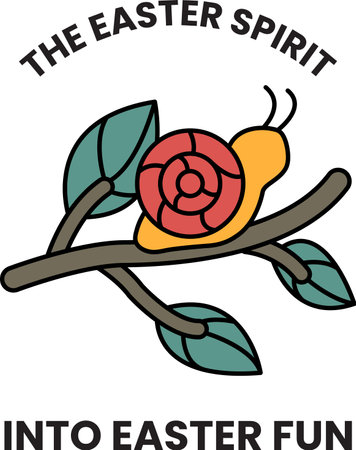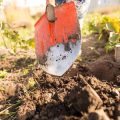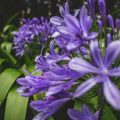1. Understanding Pollinators and Their Importance
Pollinators play a vital role in our environment, especially when it comes to growing the food we eat and maintaining healthy ecosystems. In the U.S., some of the most common pollinators include bees, butterflies, hummingbirds, and even bats. Each of these creatures helps transfer pollen from one flower to another, which is essential for plants to produce fruits, seeds, and new plants.
Common Pollinators in the United States
| Pollinator | Where Theyre Found | What They Pollinate |
|---|---|---|
| Bees (Honeybees & Native Bees) | Nationwide | Fruits, vegetables, wildflowers |
| Butterflies | Parks, gardens, meadows | Wildflowers, herbs |
| Hummingbirds | Western & Southern U.S. | Tubular flowers like salvia and columbine |
| Bats | Southwest & tropical regions | Night-blooming plants like agave and cactus |
Why Pollinators Matter
Pollinators are responsible for fertilizing over 75% of flowering plants and nearly 35% of global food crops. Without them, many fruits, nuts, and vegetables would disappear from our diets. They also support healthy ecosystems that clean the air, stabilize soils, and support other wildlife.
The Link Between Pollinators and Biodiversity
A wide range of pollinators ensures that different types of plants can thrive. This plant diversity attracts more wildlife and supports complex food webs. When we lose pollinators due to habitat loss or pesticide use, the entire ecosystem feels the impact.
Your Backyard Can Help
No matter the size of your outdoor space—whether its a large garden or a small balcony—creating a pollinator-friendly environment makes a difference. By planting native flowers and avoiding harmful chemicals, every yard can become a safe haven for pollinators and contribute to local biodiversity.
2. What Is a Pollinator Garden?
A pollinator garden is a specially designed outdoor space that supports pollinators like bees, butterflies, hummingbirds, and other beneficial insects. These gardens play a vital role in maintaining biodiversity by providing food, shelter, and breeding grounds for pollinators that are essential for the health of ecosystems and food crops.
Key Features of a Pollinator-Friendly Garden
To create an effective pollinator garden, its important to include specific elements that attract and sustain these helpful creatures. Heres what makes up a true pollinator-friendly garden:
Native Plants
Using native plants is one of the most important steps you can take. Native plants have evolved alongside local pollinators, making them the best sources of nectar and pollen.
| Region | Examples of Native Plants |
|---|---|
| Northeast U.S. | Milkweed, Coneflower, Bee Balm |
| Southeast U.S. | Coreopsis, Black-eyed Susan, Blazing Star |
| Midwest U.S. | Prairie Clover, Joe-Pye Weed, Wild Bergamot |
| Southwest U.S. | Desert Marigold, Penstemon, Agave |
| West Coast U.S. | California Poppy, Yarrow, Lupine |
Bloom Diversity
Pollinators need a steady source of nectar throughout the growing season. Planting a variety of flowers that bloom at different times ensures there’s always something in bloom from early spring to late fall.
Bloom Season Planning Tips:
- Early Bloomers: Crocus, Wild Geraniums
- Mid-Season: Lavender, Sunflowers
- Late Bloomers: Goldenrod, Asters
Natural Habitat Features
A great pollinator garden also provides places for pollinators to nest and rest. Avoid using pesticides and make room for natural materials like logs, bare soil patches, or rock piles where bees and other insects can find shelter.
Habitat Enhancers:
- Bare Soil Areas: Ground-nesting bees need exposed soil to build their nests.
- Nesting Boxes: Help solitary bees like mason bees find safe nesting spots.
- Water Sources: A shallow dish with pebbles gives pollinators a safe place to drink.
A thoughtfully planned pollinator garden not only enhances your yard’s beauty but also contributes to the larger goal of protecting biodiversity across your community and beyond. Every plant choice and layout decision matters—your yard can truly make a difference!
![]()
3. The Impact of Pollinator Gardens on Biodiversity
Pollinator gardens, even those planted in small backyards or on apartment balconies, can have a surprisingly big impact on biodiversity. These green spaces provide essential food and shelter for bees, butterflies, hummingbirds, and other pollinators that are critical to healthy ecosystems. In the United States, many native pollinator species are facing threats due to habitat loss, pesticide use, and climate change. By planting a variety of flowering plants that bloom throughout the growing season, everyday gardeners can help turn the tide.
Small Spaces, Big Results
You don’t need acres of land to make a difference. A single flower bed or container garden filled with native wildflowers can serve as a vital pit stop for migrating butterflies or an important nesting site for solitary bees. When lots of people plant these types of gardens across neighborhoods, they create what’s known as a “pollinator corridor”—a network of food sources that allows pollinators to safely travel and reproduce across larger areas.
How Small Gardens Support Biodiversity
| Garden Feature | Biodiversity Benefit |
|---|---|
| Diverse Native Plants | Supports a wide range of local pollinator species by providing appropriate nectar and pollen sources |
| Continuous Blooming Seasons | Ensures year-round food supply for different pollinators at various life stages |
| No Pesticides | Creates a safe environment for sensitive insects like bees and butterflies |
| Nesting Materials and Habitat | Encourages reproduction by offering shelter and breeding spots for native bees and other species |
Local Action, Regional Impact
When individuals and communities plant pollinator gardens, they are contributing to a larger environmental effort. These gardens increase the number of pollinators in an area, which helps nearby farms grow fruits and vegetables more efficiently through natural pollination. This reduces the need for artificial interventions and supports sustainable agriculture.
Did You Know?
The U.S. Fish & Wildlife Service reports that more than 30% of native bee species are in decline. Creating a simple garden with milkweed, goldenrod, or lavender could help turn your yard into a lifeline for these struggling populations.
4. Designing Your Own Pollinator-Friendly Yard
Creating a pollinator-friendly yard is one of the most rewarding ways homeowners can support local biodiversity. It doesn’t require a huge space or fancy landscaping—just a thoughtful approach centered on what pollinators really need: food, shelter, and a safe environment.
Choose Native Plants First
Native plants are the backbone of any successful pollinator garden. Theyre adapted to your regions climate and soil, and they provide the best food sources for native bees, butterflies, hummingbirds, and other pollinators. When selecting plants, aim for variety in color, shape, and bloom time to attract different species throughout the year.
Recommended Native Plants by Region (Examples)
| Region | Popular Native Plants |
|---|---|
| Northeast | Bee Balm, Black-eyed Susan, Milkweed |
| Southeast | Blazing Star, Coreopsis, Purple Coneflower |
| Midwest | Wild Bergamot, Prairie Clover, Goldenrod |
| Southwest | Desert Marigold, Penstemon, Agave |
| Pacific Northwest | Lupine, Oregon Grape, Red-flowering Currant |
Avoid Pesticides and Herbicides
Chemicals commonly used in yards can be harmful—even deadly—to pollinators. Try using natural pest control methods like introducing beneficial insects (such as ladybugs), removing pests by hand, or applying neem oil when necessary. Remember: a few bugs in your garden are okay if it means keeping pollinators safe.
Plan for Year-Round Blooms
A well-planned pollinator garden should have flowers blooming from early spring through late fall. This ensures that pollinators always have access to nectar and pollen. Mix early bloomers like crocus with summer favorites like sunflowers and fall staples such as goldenrod.
Seasonal Blooming Guide
| Season | Blooming Plants Examples |
|---|---|
| Spring | Crocus, Lupine, Wild Geranium |
| Summer | Bee Balm, Coneflower, Yarrow |
| Fall | Aster, Sedum, Goldenrod |
Add Shelter and Water Sources
Pollinators also need places to rest and nest. Leave small patches of bare soil for ground-nesting bees. Add logs or bee houses to support solitary bees. A shallow dish with pebbles filled with water can give butterflies and bees a place to drink without drowning.
Quick Tips to Get Started:
- Start small: Even a few containers or a flower bed can make a difference.
- Diversify: Use different plant heights and bloom types to attract more species.
- Avoid double blooms: They may look pretty but often lack nectar or pollen.
- Leave some leaf litter: Many insects overwinter in fallen leaves and dead stems.
- Get neighbors involved: A whole block of pollinator gardens has even more impact!
Your yard can be more than just beautiful—it can be part of a thriving network that supports vital pollinators across your neighborhood and beyond.
5. Community Impact and the Collective Power of Urban Gardens
While planting a pollinator garden in your own yard might seem like a small gesture, it’s part of a much bigger picture. When individuals take action to support pollinators—like bees, butterflies, and hummingbirds—they contribute to a healthier urban ecosystem. And when communities come together through shared spaces and local initiatives, those efforts multiply in impact.
How Individual Gardens Add Up
Each garden filled with native flowering plants becomes a stepping stone or “pollinator pit stop” across the city. Pollinators often travel long distances to find food and shelter, so even small patches of habitat can make a big difference. The more people that join in, the easier it becomes for these vital species to survive and thrive.
The Role of Community Gardens
Community gardens are more than just places to grow vegetables—theyre also key spaces for promoting biodiversity. By incorporating native plants and educating members about pollinator-friendly practices, these gardens become living classrooms and sanctuaries for wildlife. Plus, they foster collaboration among neighbors who might not otherwise connect.
Benefits of Community Gardens for Biodiversity
| Benefit | Description |
|---|---|
| Habitat Creation | Support for pollinators, birds, and beneficial insects |
| Education Opportunities | Hands-on learning about native plants and ecosystems |
| Community Engagement | Encourages stewardship and environmental responsibility |
The Importance of School Programs
Youth education is key to building a future where biodiversity is valued and protected. Many schools across the U.S. now include pollinator gardens as part of their science curriculum. These programs teach students how ecosystems work and why every species matters—all while giving them a chance to get their hands dirty in a meaningful way.
What School Pollinator Programs Teach
- The life cycles of bees, butterflies, and other pollinators
- The role of native plants in supporting wildlife
- Sustainable gardening techniques
The Influence of Local Policies
Cities and towns have the power to shape urban landscapes through ordinances, incentives, and public space planning. Some municipalities provide grants for creating pollinator habitats or offer free native plants during community events. Others update zoning laws to allow for natural landscaping instead of traditional turf lawns. These policies make it easier for residents to participate in conservation efforts from their own backyards.
Examples of Local Policy Support
| City/County | Biodiversity Initiative |
|---|---|
| Austin, TX | “Bee City USA” designation promotes pollinator-friendly practices citywide |
| Boulder County, CO | Native Plant Restoration Grant Program for residents and schools |
| Minnesota Statewide | “Lawns to Legumes” program offers financial assistance for pollinator gardens |
Together, our yards, schools, community gardens, and local governments form an interconnected network that supports urban biodiversity. Every flower planted is a vote for a healthier planet—and when we work together, those votes really count.


